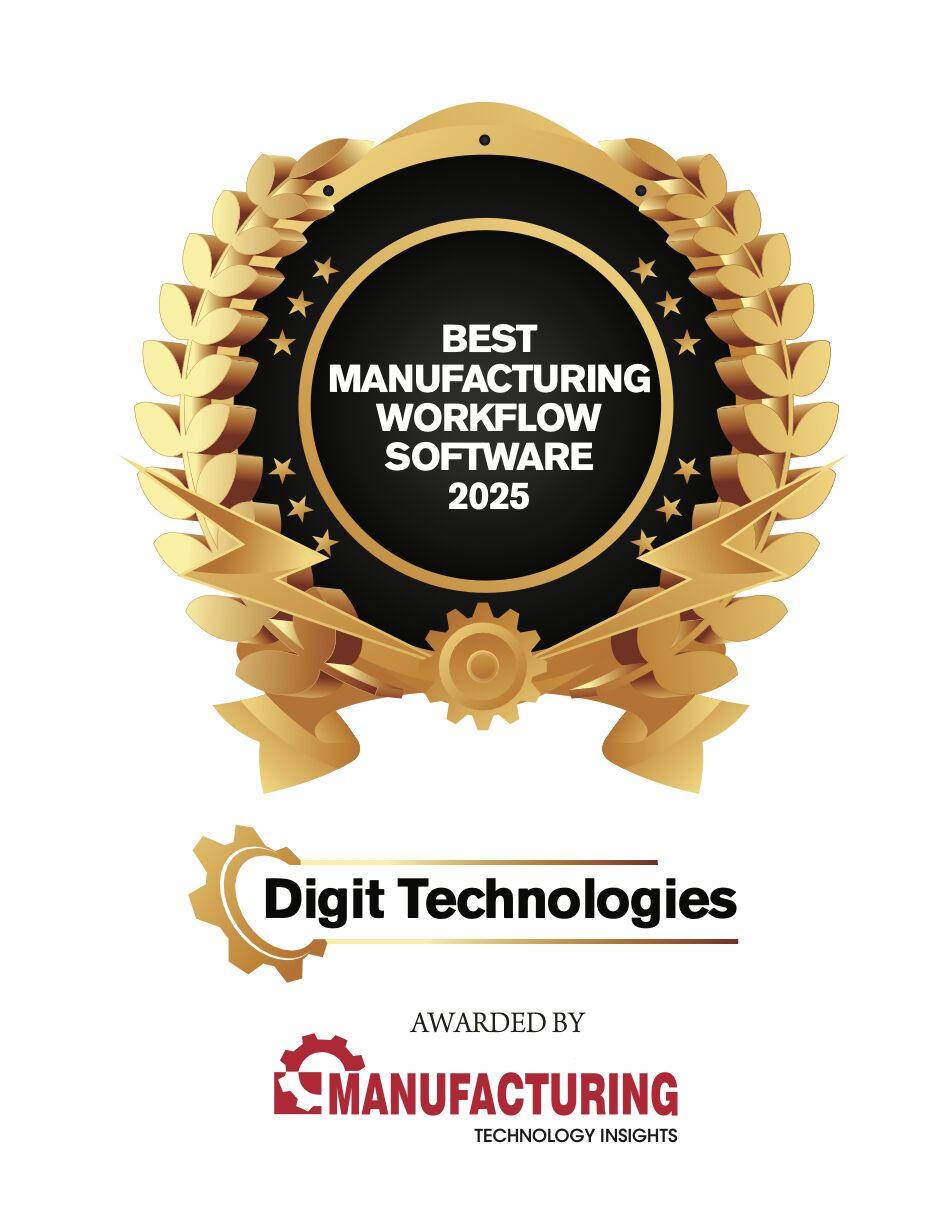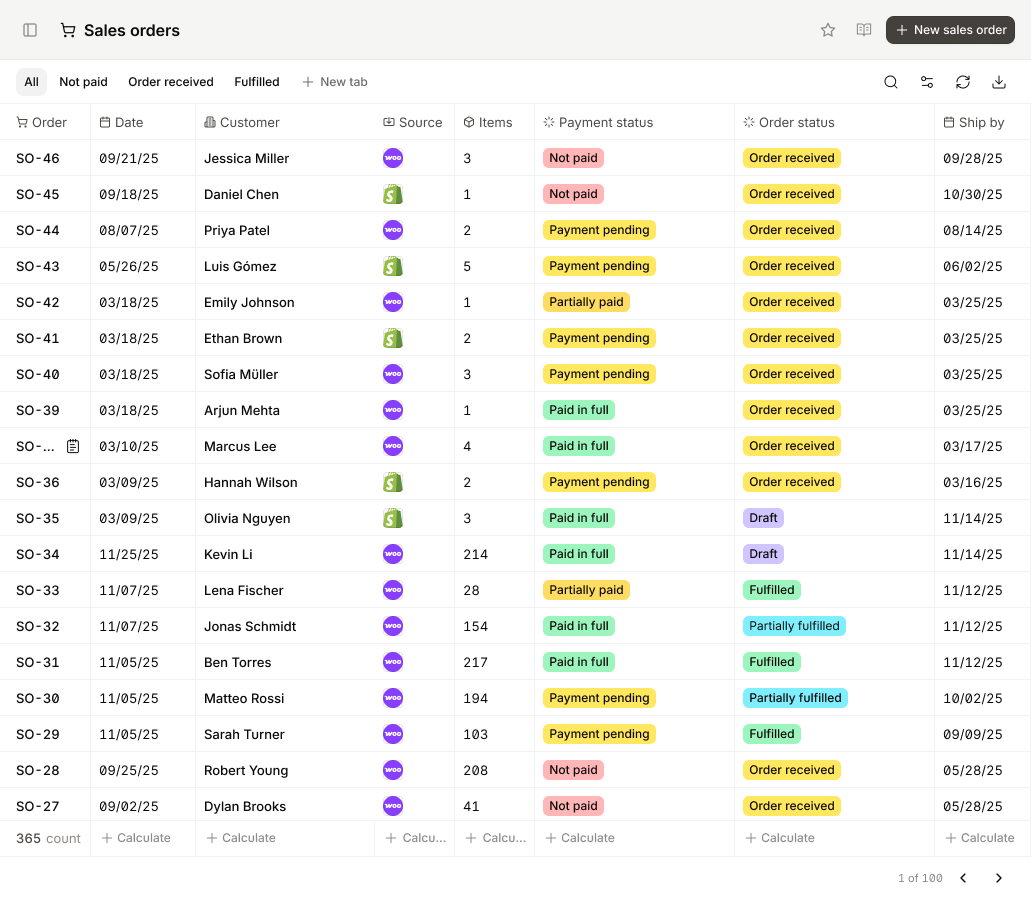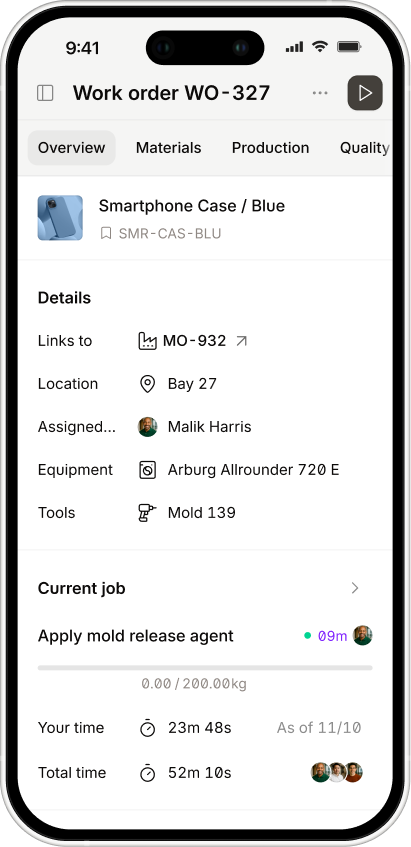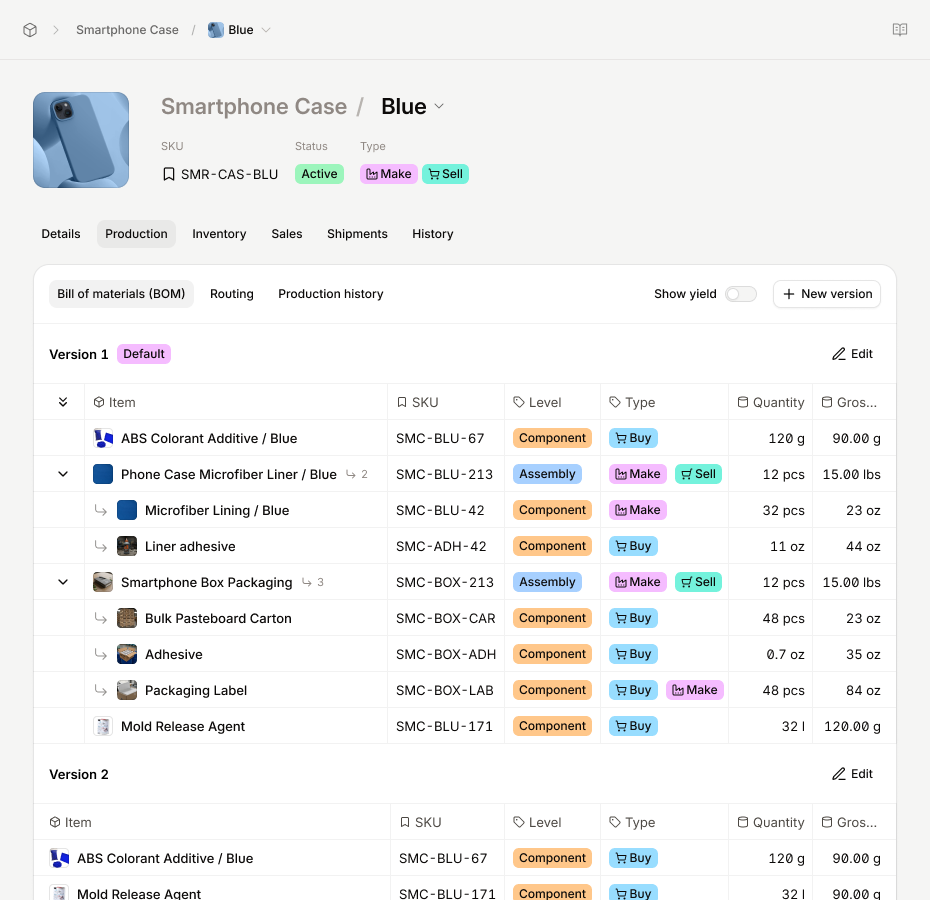What Is Food Manufacturing?
Food manufacturing is the process of transforming ingredients into safe, consumable products through a series of controlled steps including:
- Preparation,
- Processing,
- Packaging, and
- Distribution.
Statista forecasts more than $5 trillion in global food manufacturing output by the end of 2025. There’s a lot of cheddar cheese in this industry, both figuratively and metaphorically. But before we continue, let’s quickly break down the differences between food manufacturing and food processing.
Food Manufacturing vs. Food Processing
As you start doing your research, you might see these two terms appearing often. You may notice that they’re used interchangeably, but the terms do differ slightly:
Food processing
Individual transformations, mechanical or chemical, such as grinding coffee beans, pasteurizing milk, or freezing vegetables.
Food manufacturing
Encompasses the entire supply chain, from procurement and production, to shipping and logistics.
Real-World Food Manufacturing Examples
Nothing will give you a better understanding of food manufacturing than checking out the top businesses in the field. Here are some examples of food manufacturers you might recognize:
Coffee roasting
Stumptown Coffee Roasters source and roast beans in Oregon before distributing nationwide.
Farm to table
Blue Diamond Almonds processes almonds from Blue Diamond Growers into snacks and plant-based products.
Ice cream
Ben & Jerry’s turns dairy from Vermont into a globally recognized ice cream brand.
Each example highlights the same foundation of food manufacturing:
- Take ingredients
- Convert ingredients into a product
- Ship and sell that product
A Quick History of Food Manufacturing
Humans have been processing food since the discovery of fire and the defining inventory of humanity, the knife and fork. Preservation methods included:
- Salting meat,
- Drying grains, and
- Fermenting vegetables.
But the Industrial Revolution came and turned all that onto its head with the introduction of machinery, canning, and pasteurization, making mass production possible.
By the mid-1900s, refrigeration and freezing transformed supply chains, and in the 21st century, automation and data analytics became central to food production. Today, traceability software and barcode systems allow any size manufacturer to meet strict standards.
Did you know? Digital traceability became more widespread in the 2000s. However, barcode tracking, first used for food in 1974 (a pack of Wrigley’s gum was the first scanned product), paved the way for the cloud-based traceability systems small producers use today.
Food Manufacturing Process in 6 Steps
While the details differ depending on the product, every successful food manufacturer follows a similar framework.
The six steps outlined below show you how to get safe ingredients, packaged goods ready for shelves and customers.
Step 1: Raw Material Sourcing
Start by partnering with trusted suppliers who can provide traceable, high-quality ingredients and packaging materials. Reliable sourcing ensures consistent flavor, safety, and compliance.
Step 2: Pre-Processing
Pre-processing cleans, measures, and prepares ingredients for production. It removes variation before transformation begins. This ensures every batch enters the line consistent, safe, and ready for precision work.
Step 3: Processing
Ingredients move from preparation to transformation through techniques that range from mechanical mixing to fermentation and thermal treatment. Each process is designed to create the texture, safety, and extend shelf life.
Step 4: Packaging
Seal and label products immediately after processing to lock in freshness and meet labeling regulations. Packaging materials should protect against contamination and make products easy to handle and transport.
Step 5: Quality Control
Evaluate every batch for taste, texture, safety, and consistency. Regular testing and documentation not only maintain brand standards but also help you stay compliant with FDA and HACCP requirements (we will talk more about this later).
Step 6: Distribution
Once products pass quality checks, store and transport them under the right conditions to reach retailers, distributors, or consumers. Effective logistics here will help you complete the manufacturing cycle and guarantee food arrives fresh and safe.
It goes without saying, maintaining strict hygiene, temperature control, and recordkeeping throughout these steps protects product integrity and builds long-term customer trust.
Once you understand how products are made, the next challenge is learning how to build a business that can make them consistently.
How to Start a Food Manufacturing Business
Turning a great recipe into a viable manufacturing business takes more than a can-do attitude.
Before you rush out to buy equipment or sign a lease, you’ll need to validate your idea, plan your operations, and set up the compliance groundwork that will keep your production safe and, more importantly, profitable.
The following steps outline how to move from concept to commercial kitchen:
1. Develop Your Product and Market Fit
Research market gaps and validate your idea.
Determine if your product solves a need like making staple foods like pasta or beverages, or fulfills a want such as specialty snacks or sauces. Conduct taste tests, gather feedback, and finalize recipes with standardized yields and costs.
2. Build a Business Plan
Outline your product line, pricing strategy, target audience, equipment, staffing, and financing. Include regulatory costs and marketing channels:
- Retail
- Wholesale, and
- Direct to consumer (D2C).
This is an important step, and there are tons of resources online to help you achieve this goal.
3. Secure a Production Space
And you don’t have to start going to your local industrial zone to achieve this step. You can start small and simple in a shared commercial kitchen before moving into your own facility. The only thing that matters is that each site must comply with local zoning and state food production laws.
4. Obtain Licenses and Permits
Expect to apply for:
- Local business licenses and health permits,
- FDA or USDA registration, and
- State-level certifications for specialized foods (dairy, meat, organic, etc.).
5. Purchase Equipment and Raw Materials
Start with dependable equipment that fits your current budget and production goals:
- Mixers,
- Ovens,
- Pasteurizers, or
- Packaging tools.
If you’re strapped for cash, new machinery can wait in the beginning.
You can often find high-quality used or refurbished units through local auctions, food-industry resellers, or other manufacturers upgrading their lines. When possible, choose models that can handle longer hours or accept add-on capacity later, so you won’t need to replace everything as you grow.
There’s also ingredients and packing you’ll need to worry about too. Build supplier relationships early and prioritize vendors who can provide lot-traceable ingredients and packaging materials.
6. Hire and Train Staff
Even small teams need cross-functional training in sanitation, temperature control, and safety. Document standard operating procedures (SOPs) early to maintain consistency as you grow.
7. Implement a Quality and Traceability System
Batch and expiry tracking, supplier data, and recall readiness form your compliance backbone. If you’re looking for a tool to make sure you hit the ground running and can be compliant at the same time, Digit helps small food manufacturers manage serialized inventory, raw materials, and production logs, without the costs of a traditional ERP setup.
The Core Food Safety Systems
Regulation is the framework that keeps your products safe, your business credible, and your customers happy.
And understanding how food safety systems work now will save you from costly recalls and give your brand a professional foundation from day one. Here’s what you should be keeping an eye on:
1. Practice Good Manufacturing Principles (GMPs)
GMPs set the baseline for cleanliness, facility layout, and employee hygiene. They dictate everything from how equipment is sanitized to how ingredients are handled and stored. When implemented early, they prevent contamination and build consistent production habits from the get go.
2. Control Hazards Before They Happen (HACCP)
The HACCP system goes a step further by identifying specific risks, such as biological, chemical, or physical, and establishing control points to catch them.
Examples include:
- Verifying cooking temperatures,
- Managing allergen cross-contact, and
- Logging refrigeration data.
Think of HACCP as the daily checklist that protects both your customers and your reputation.
3. Shift From Reaction to Prevention (FSMA)
The Food Safety Modernization Act (FSMA) requires manufacturers to prove they’re preventing problems, not just responding to them.
It formalizes supplier verification, traceability, and documentation. A strong FSMA plan connects every lot of ingredients to its source and destination, ensuring you can trace an issue in minutes instead of days.
Managing Inventory, Costs, and Compliance as You Scale
As orders increase, managing raw materials and making your final product becomes a headache that can lead to serious consequences if you’re not prepared for growth. These three areas typically challenge new manufacturers:
- Inventory Control: Live tracking of ingredients and finished goods helps you meet FEFO (First Expired, First Out) requirements and avoid waste.
- Cost Visibility: Automated costing ensures you understand margins per batch and avoid underpricing.
- Traceability and Compliance: Without software it is going to be particularly challenging to show when it was made, which batch it came from, and where it shipped.
Common Challenges and How to Overcome Them
Even with the best plan, every new manufacturer faces obstacles.
But, understanding them and identifying pain points early will help you plan capacity, avoid costly disruptions, and scale more efficiently. Starting with:
1. Managing Perishable Inventory
Perishables spoil quickly without strict rotation.
Adopt a FEFO system and track expiration dates so that the oldest stock ships first. Regularly audit storage temperatures to maintain compliance and prevent loss.
2. Staying Audit-Ready
Regulatory audits can arrive with little warning.
Prepare by maintaining real-time records of production runs, supplier lots, and cleaning logs. Using cloud software will help make having every document accessible and centralized.
3. Maintaining Consistent Quality
Scaling should never compromise flavor or safety.
Standardize recipes and use digital checklists for each step of production. Monitor batch performance metrics like yield, temperature, and packaging weight to identify deviations quickly.
4. Staffing and Training
Labor shortages remain a persistent challenge across U.S. manufacturing.
About 20.6% of plants reported operating below capacity in 2024 due to insufficient labor or skills, roughly double the pre-pandemic average. This means it’s going to be important to Cross-train team members, automate repetitive tasks, and simplify workflows with barcode scanning to make onboarding faster and reduce turnover.
5. Managing Cash Flow
Cash flow is often tied up in raw materials.
Use demand forecasting and real-time inventory to avoid overstocking. Digit provides cost summaries per batch, helping you plan procurement strategically and free up working capital.
6 Operational Tips for Long-Term Success
Once your production line is up and running, the focus shifts from getting started to staying consistent.
Long-term success in food manufacturing depends on building resilient systems that anticipate problems before they happen. These six steps will help you strengthen your operations, protect your margins, and scale sustainably as demand grows.
Step 1: Create Supply Redundancy
Secure backup suppliers for essential ingredients and packaging materials.
Redundant sourcing keeps you flexible and production moving if a vendor experiences shortages, shipping delays, or sudden price changes.
Step 2: Schedule Predictive Maintenance
Track machine performance and schedule service before breakdowns happen.
Regular maintenance minimizes downtime and extends the lifespan of critical equipment.
Step 3: Measure and Manage Energy Use
Energy is one of the largest operating costs in food manufacturing.
Refrigeration alone can use 30–60 % of total electricity. Audit your layout, cooling cycles, and insulation to cut waste and lower costs.
Step 4: Document Cleaning and Audits
Cleanliness and documentation go hand in hand.
Keep sanitation checklists, temperature logs, and inspection records, preferably in digital form, so they’re easy to access during audits or compliance reviews.
Step 5: Adopt Automation Strategically
Automation doesn’t have to mean robotics.
Start small with barcode scanning, batch tracking, and digital work orders to eliminate manual errors and gain real-time visibility across your production line. For example, Digit lets you automate these steps in one place connecting:
- Inventory,
- Production, and
- Reliable data.
Step 6: Prioritize Sustainability
Sustainability is more than your PR ticking a box, it’s becoming a good business strategy to implement.
Recycle water, reduce packaging waste, and explore eco-friendly materials. Customers notice brands that make responsible choices and reward them with loyalty.
The Future of Food Manufacturing
The global food and beverage market is valued at $9.44 trillion in 2025 and is projected to reach $11.37 trillion by 2030, expanding at a compound annual growth rate (CAGR) of 3.91%, According to Mordor Intelligence.
This steady growth reflects the sector’s ability to stay resilient, even though people's priorities shift toward health, convenience, and sustainability while embracing automation and digital transformation to stay competitive.
Here are 5 things you can expect to see more of in this industry:
1. Artificial Intelligence and Smart Manufacturing
AI is reshaping how food is produced, monitored, and delivered.
More and more manufacturers are using AI to forecast demand, detect equipment failures before they happen, and maintain quality control at a large scale.
Some AI-powered vision systems inspect products in real time for color, size, and packaging defects, while intelligent scheduling tools optimize production runs based on ingredient availability.
All of this combines to reduce waste, minimize downtime, and free up teams to focus on innovation rather than manual oversight.
2. Automation and Connected Operations
Automation continues to drive efficiency across the supply chain.
Cloud-based platforms, IoT sensors, and digital twins provide real-time visibility into production data and equipment health. 92% of manufacturers surveyed believe it will be the main driver of competitiveness over the next three years.
For food producers, that means greater traceability, fewer human errors, and more responsive production planning.
3. Sustainable and Plant-Based Production
The global plant-based food market, currently worth about $30 billion, is projected by Bloomberg Intelligence to exceed $160 billion in the next decade.
That surge reflects growing consumer demand for products that align with environmental and ethical values.
Manufacturers that cut energy consumption, source ingredients locally, and invest in recyclable or compostable packaging aren’t just reducing their footprint, but increasing margins, future-proofing their supply chains, and building trust with increasingly eco-conscious customers.
4. Personalization and D2C Models
AI is also driving personalized nutrition, where data from wearables and health apps inform tailored meal kits and fortified products.
Combined with e-commerce and social media, this trend allows emerging brands to sell directly to consumers without traditional retail gatekeepers.
5. Regulatory Evolution and Digital Traceability
As transparency demands grow, traceability will become non-negotiable.
Governments are tightening food-safety laws and requiring auditable digital records. Smart batch-tracking systems, powered by AI and cloud integrations, will soon be the gold standard in making sure every ingredient can be traced from farm to fork.
The future of food manufacturing will belong to companies that treat technology not as a side project but as part of their DNA.
Your Recipe for Manufacturing Success
Most food and beverage manufacturing businesses already track inventory, manage compliance, and stay on top of production. Though surprisingly, much of it still happens through spreadsheets, emails, and handwritten notes.
It works, but it’s hard to maintain as orders grow.
That’s why many turn to Digit, a cloud inventory and manufacturing software designed to automate and centralize all the vital components of your food manufacturing business.
- End-to-end Inventory Tracking without the Paperwork: Record lot numbers, expiration dates, and warehouse locations as you receive materials, then watch them flow automatically through production and shipment.
- Real-Time Production Visibility: Work orders update as they happen, so operators can record progress and material they use from any smart device.
- Accurate Costing Built into Every Batch: Labor hours and materials are logged directly into the job, giving you precise margins without reconciling spreadsheets at month’s end.
- Traceability That Stands up to Audits: Because each lot is linked from receiving through to shipping, you can trace ingredients and finished goods in minutes and respond instantly if an issue arises.
- Faster Fulfillment with Fewer Touchpoints: Quotes convert to sales orders and shipments in a click, while bills of lading and accounting entries generate automatically. Digit integrates directly with QuickBooks and Shopify, keeping your orders, inventory, and accounting perfectly aligned.
Digit helps you remove the manual work out of your processes, giving you the breathing space to focus on producing top-quality food.
%201.svg)


.png)




.jpg)





